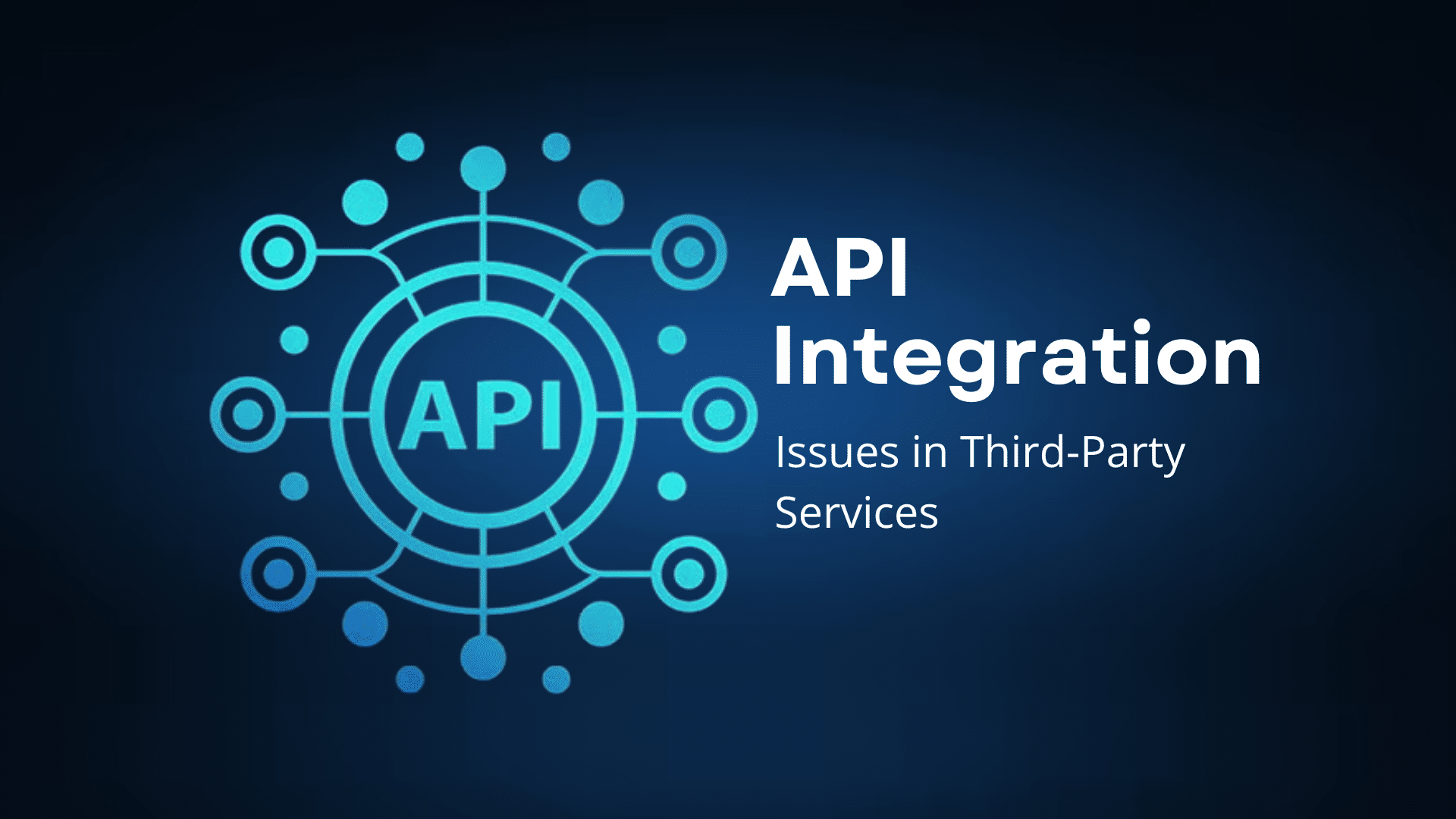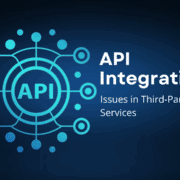API Integration Issues in Third-Party Services for Application Development
When it comes to efficient software development in modern times, the importance of Application Programming Interfaces or APIs cannot be underestimated. In fact, integrating third-party APIs has become a fundamental practice today.
A report by Postman mentions that 51% of businesses said that they rely heavily on third-party APIs to build applications faster and more efficiently. This makes it quite evident that the strategic use of third-party API integrations has become a pivotal factor in creating robust software and applications.
However, with great potential comes unique challenges as well.
Integrating APIs from third-party services into mobile application development is not always a seamless process. Businesses often encounter a variety of issues that can derail timelines, degrade user experience, and even lead to project failures.
This blog dives into the core of these issues, starting with an understanding of what third-party API integration is and then exploring the challenges businesses face during the process along with some effective solutions.
Understanding API Integration in Application Development
API integration is a process of connecting different software applications or systems using APIs to allow them to communicate with each other and exchange data. API integrations in mobile application development are crucial for enhancing user experiences by providing a fully-fledged and highly responsive solution.
APIs provide a standardized way for different systems to interact with each other, allowing businesses to create more efficient workflows, automate processes, and access a wide range of third-party services and data sources. Successful API integration is a long-term investment but it comes with significant challenges.
Third-Party API Integration Challenges in Application Development
While the benefits of API integration in application development are substantial, the process is packed with technical and strategic challenges. For businesses to create seamless and efficient applications, it is important to understand these challenges proactively and stay prepared before their app development project begins.
Let’s explore the most common issues businesses encounter during third-party API integration in software development;
Inconsistent Documentation
One of the most significant challenges in API integration is a lack of standardized and up-to-date documentation. Without proper documentation, it can be difficult to understand the API’s functionalities, the data it provides, and the methods for accessing it. This can create confusion and errors during the integration process.
Data Incompatibility
When integrating third-party APIs in an application development environment, it is common to encounter data incompatibility issues. Different APIs may use different data formats, which can make it difficult to share data between them. This can cause errors and inconsistencies in the data across various development stages.
Security Vulnerabilities
Third-party API integration can pose security risks to your system. Hackers can exploit vulnerabilities in your API integration to gain access to your system and steal data. This can be particularly dangerous if the API is used to access sensitive data like financial or personal information.
Rate Limiting and Usage Quotas
Most third-party services implement usage limits on their APIs to prevent abuse. Exceeding these limits can result in throttling or blocked access, affecting application performance. A report by Akamai noted that over 45% of API performance issues in application development are linked to rate limiting or usage quota exhaustion.
Versioning and Compatibility
APIs can evolve over time, and providers may release new versions or deprecate old ones. It means that newer versions of the API may have different functionality or data structures. This can make it difficult to maintain compatibility between different versions of the API, hindering the performance and functionalities of the application.
Limited Scalability
Ensuring scalability has always been a challenge with integrating third-party APIs in application development. Businesses want applications that can scale with their business growth and rising user needs. However, the limited scalability of third-party APIs makes it difficult for businesses to ensure this.
Dependency Risks
Integration of third-party APIs in applications makes them dependent on external services. If the API provider changes their service, updates their API, or experiences downtime, it can directly impact the application’s functionality. APIs may also get affected due to server outages or DDoS attacks, leading to longer downtimes.
Lack of Standardization
Different third-party APIs use different protocols and standards. APIs can follow different architectural styles, such as REST or SOAP, and use data formats like JSON or XML. This lack of standardization often leads to data parsing errors and communication failures in application development, making it a significant challenge.
Solutions for Successful Third-Party API Integration in Application Development
Successful third-party API integration in application development begins with understanding the key challenges of this process, followed by implementing strategic solutions to address them effectively. This requires a proactive approach during the development, testing, and deployment of the application.
Here are some of the most effective solutions to address the common issues in third-party API integration:
Thorough Research and Evaluation
Before integrating an API, conduct comprehensive research on the provider’s reliability and adherence to industry standards. Evaluate the API’s documentation and service-level agreements (SLAs) to avoid documentation-related issues.
Implement Robust Error Handling
Applications should be designed to gracefully handle API failures, timeouts, and unexpected responses. Businesses can implement retry mechanisms, caching strategies, and fallback options to enhance reliability.
Monitor API Versions Actively
To address versioning-related challenges during application development with third-party APIs, businesses must subscribe to changelogs or provider newsletters to stay updated on new versions. Versioned API URls can also be used.
Security and Authentication
Businesses must always use secure methods for API authentication (e.g., OAuth, API keys) and transmit data over HTTPS to protect against unauthorized access and data breaches. This strengthens the security and data safety of applications.
Build for Redundancy
In case of API downtimes or service outages, fallback strategies or cached data can be used to ensure the consistent functioning of applications. Alternative workflows can also be integrated to limit dependency on APIs during downtime.
Test Thoroughly
Robust testing is the most effective solution to address API integration issues in application development proactively. Use unit and integration tests with staging environments to check API functionalities before deploying them to production.
Normalize API Responses
Standardisation issues can be actively addressed by normalizing data from different APIs. For this, an adapter layer can be used in the codebase. Abstracting API-specific logic to separate modules maintains a clean and scalable architecture.
Conclusion
API integration has revolutionised how modern applications are developed, offering efficiency, flexibility, and enhanced functionality. However, businesses must know how to navigate through a host of challenges such as poor documentation, versioning conflicts, rate limiting, and security vulnerabilities.
The key to successful third-party API integration in android app development services lies in taking a strategic and well-informed approach. With proactive measures and ideal solutions in place, businesses can avoid common issues and create robust, scalable, and secure applications that work seamlessly with APIs from third-party services.




